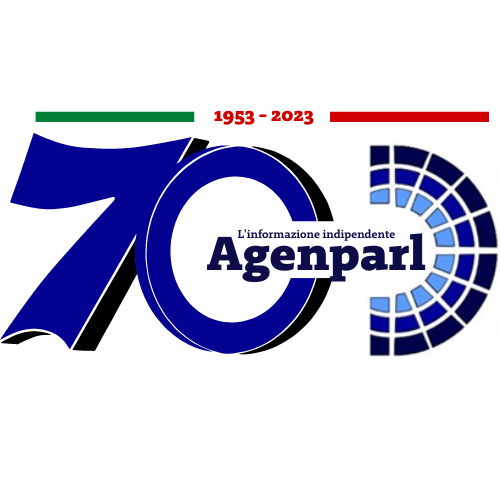 (AGENPARL) - Roma, 23 Giugno 2023
(AGENPARL) - Roma, 23 Giugno 2023(AGENPARL) – ven 23 giugno 2023 June 23, 2023
RELEASE 23-072
*NASA Awards Millions in STEM Research Grants*
*/Credits: NASA/Frank Michaux/*
NASA announced the recipients of its annual STEM grants, providing nearly $4
million in total funding, to support scientific and technical research that
aligns with the agency’s strategic research and technology development
priorities. By providing resources to STEM research, NASA helps create a
stronger and more vibrant scientific community to drive innovation and push
the boundaries of what is possible in space exploration.
“We’re excited to announce the awardees of this year’s grants that will
help the agency answer some difficult questions regarding research
capabilities,” said Kathy Loftin, manager for NASA’s Established Program
to Stimulate Competitive Research (EPSCoR) project. “These grants are a
vital component of NASA’s science, technology, engineering, and math
strategy to foster collaboration and stimulate growth in research and
development in underserved areas across the country.”
NASA STEM provides a unique opportunity for researchers to solve science and
exploration issues impacting its programs and missions. Forty research
projects from 21 universities and organizations were selected based on their
merit and alignment with agency missions. Each grantee will focus on a range
of agency research needs, including repair, manufacturing, and fabrication
technology for deep space missions; methods for detecting and eliminating
bacteria in spacecraft; and studies on lunar and Martian regolith, including
potential toxicity, suitability as soil for crops, and its ability to be used
as construction material.
The grantees include Wichita State University in Kansas, which will receive
funding to develop a compact, more efficient thermal management system for
electric motors for vertical takeoff and landing vehicles. With the growth of
electric, turbo-electric, and hybrid electric propulsion systems, development
of smaller, more efficient, and easily manufactured cooling systems for
electric motors could have significant applications for the automotive,
aviation, and space industries.
With NASA returning to the Moon through Artemis [1], new technologies are
necessary to help achieve the goal of a long-term lunar exploration. With
efforts like NASA’s Lunar Surface Innovation Initiative [2], focusing on
in-situ resource utilization of lunar materials, research from Louisiana
State University will build upon in-space manufacturing advancements by
studying the physical, chemical, and structural properties of alloys created
from simulated regolith, including melting range, heat capacity, viscosity,
and density.
To help NASA achieve its mission of unlocking the mysteries of the universe
for the benefit of all, a research team from West Virginia University will
develop a new concept in localization and guidance, navigation, and control
algorithms for exploring Earth-like planets such as Venus. The team’s
orbiter-assisted balloon navigation will use a variable-altitude balloon and
orbiter to provide accurate geotagging and enable autonomous exploration of
Venus, generating critical data to help understand Earth's own formation and
habitability change over time.
The remaining grantees are:
* Brown University, Providence, Rhode Island
* College of Charleston, Charleston, South Carolina
* Iowa State University, Ames, Iowa
* Montana State University, Bozeman, Montana
* Nevada System of Higher Education, Reno, Nevada
* New Mexico State University, Las Cruces, New Mexico
* Oklahoma State University, Stillwater, Oklahoma
* South Dakota School of Mines & Technology, Rapid City, South Dakota
* University of Alaska, Fairbanks, Alaska
* University of Alabama, Huntsville, Alabama
* University of Arkansas, Little Rock, Arkansas
* University of Delaware, Newark, Delaware
* University of Idaho, Moscow, Idaho
* University of Kentucky, Lexington, Kentucky
* University of Mississippi, University, Mississippi
* University of Nebraska, Omaha, Nebraska
* University of Puerto Rico, San Juan, Puerto Rico
* University of Wyoming, Laramie, Wyoming
The grants are funded through NASA’s EPSCoR’s R3 (Rapid Response
Research) project. The EPSCoR project is directed at jurisdictions that have
not participated evenly in competitive aerospace and aerospace-related
research activities. For the EPSCoR R3 grants, universities and schools
across the country submitted proposals, with each jurisdiction eligible to
submit a total of six proposals for competitive agreement awards of up to
$100,000 each. Twenty-five states, the Commonwealth of Puerto Rico, the U.S.
Virgin Islands, and Guam currently participate in the program.
NASA’s Office of STEM Engagement [3], in collaboration with several of the
agency’s mission directorate programs and offices, established these grants
to support research and development in areas critical to NASA's mission and
to contribute to the overall research infrastructure, science, and technology
capabilities of higher education and economic development in the
jurisdictions receiving funding.
For more information on the program and the recipients of this year's awards,
please visit:
*www.nasa.gov/stem/epscor/home/index.html* [4]
-end-
*Press Contacts*
Katherine Brown
Headquarters, Washington
202-358-1288
Derrol Nail
Kennedy Space Center, Florida
321-289-9513
NASA news releases and other information are available automatically by
text in the body is required).
To unsubscribe from the list, send an e-mail message
required).
[1] https://www.nasa.gov/specials/artemis/
[2] https://www.nasa.gov/directorates/spacetech/Lunar_Surface_Innovation_Initiative
[3] https://www.nasa.gov/stem/about.html
[4] http://www.nasa.gov/stem/epscor/home/index.html
